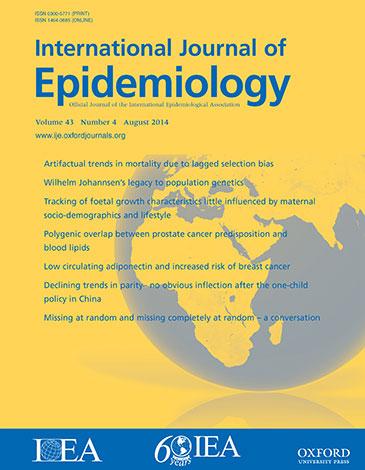Short-term effect of temperature on cause-specific, sex-specific, and age-specific ambulance dispatches in Czechia: a nationwide time-series analysis
IF 5.9
2区 医学
Q1 PUBLIC, ENVIRONMENTAL & OCCUPATIONAL HEALTH
引用次数: 0
Abstract
Background Although several studies have investigated temperature-related mortality and morbidity, only a little is known about the short-term effects of temperature on ambulance dispatches. We aimed to conduct the first nationwide analysis of the association between temperatures and ambulance dispatches in Europe, including, for the first time, a detailed description of age-specific risks for 10-year age groups. Methods We collected daily data on ambulance dispatches and climate (i.e. temperature and relative humidity) for each district of Czechia (n = 77) during 2010–19. We estimated the relationship for each district by using a quasi-Poisson regression with distributed lag non-linear models. We then applied a multilevel multivariate random-effects meta-analysis to derive regional and countrywide average associations and calculated the burden of ambulance dispatches that was attributable to non-optimum temperatures. Results The susceptibility to low (high) temperatures increased (decreased) with age, except for the youth (<20 years), for whom the risks for both heat and cold were the highest. High temperatures contributed slightly to the risk of ambulance dispatches due to respiratory and cardiovascular causes, while the contribution of low temperatures was substantial. The overall ambulance dispatches burden that was attributable to non-optimum temperatures (optimum temperature = 7.9°C) was 3.55% (95% eCI: 3.43 to 3.67), with a predominant contribution of heat [2.32% (95% eCI: 2.15 to 2.46)] compared with cold [1.23% (95% eCI: 1.16 to 1.30)]. Conclusion This data can be used as an early-warning indicator for temperature impacts, especially among vulnerable population subgroups, such as children, adolescents, and young adults. This evidence has important implications for healthcare system preparedness and management, and for the projections of climate change health impacts.温度对捷克特定病因、性别和年龄的救护车调度的短期影响:一项全国性的时间序列分析
虽然有一些研究调查了温度相关的死亡率和发病率,但对温度对救护车调度的短期影响知之甚少。我们的目标是对欧洲气温和救护车调度之间的关系进行首次全国范围的分析,包括首次对10岁年龄组的特定年龄风险进行详细描述。方法收集捷克各地区(77个)2010 - 2019年救护车调度和气候(即温度和相对湿度)的日常数据。我们使用具有分布滞后非线性模型的准泊松回归估计了每个地区的关系。然后,我们应用了一个多水平多变量随机效应荟萃分析来得出区域和全国的平均关联,并计算了非最佳温度导致的救护车调度负担。结果随着年龄的增长,对低温(高)的易感性增加(降低),但青年(20岁)对高温和低温的易感性最高。由于呼吸和心血管原因,高温对救护车调度的风险贡献很小,而低温的贡献很大。非最佳温度(最佳温度= 7.9°C)造成的总体救护车调度负担为3.55% (95% eCI: 3.43至3.67),主要贡献为热[2.32% (95% eCI: 2.15至2.46)],而冷[1.23% (95% eCI: 1.16至1.30)]。结论该数据可作为气温影响的预警指标,特别是对儿童、青少年和青壮年等脆弱人群的影响。这一证据对卫生保健系统的准备和管理以及气候变化对健康影响的预测具有重要意义。
本文章由计算机程序翻译,如有差异,请以英文原文为准。
求助全文
约1分钟内获得全文
求助全文
来源期刊

International journal of epidemiology
医学-公共卫生、环境卫生与职业卫生
CiteScore
13.60
自引率
2.60%
发文量
226
审稿时长
3 months
期刊介绍:
The International Journal of Epidemiology is a vital resource for individuals seeking to stay updated on the latest advancements and emerging trends in the field of epidemiology worldwide.
The journal fosters communication among researchers, educators, and practitioners involved in the study, teaching, and application of epidemiology pertaining to both communicable and non-communicable diseases. It also includes research on health services and medical care.
Furthermore, the journal presents new methodologies in epidemiology and statistics, catering to professionals working in social and preventive medicine. Published six times a year, the International Journal of Epidemiology provides a comprehensive platform for the analysis of data.
Overall, this journal is an indispensable tool for staying informed and connected within the dynamic realm of epidemiology.
 求助内容:
求助内容: 应助结果提醒方式:
应助结果提醒方式:


